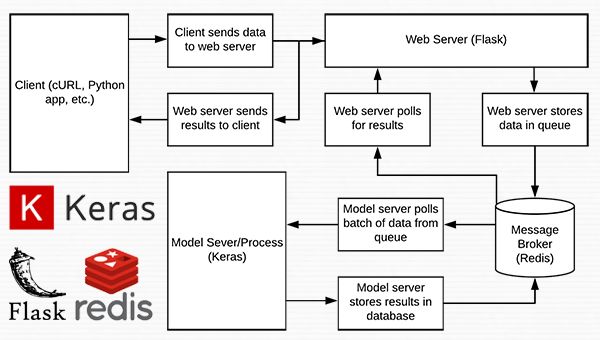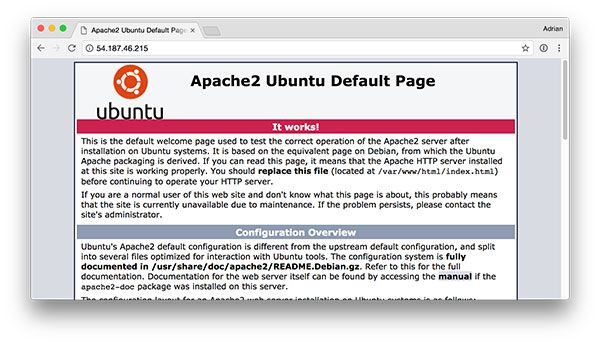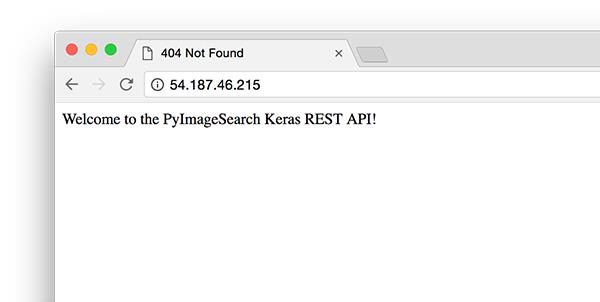教程 | 如何使用KerasRedisFlask和Apache把深度学习模型部署到生产环境?
Posted 机器之心
tags:
篇首语:本文由小常识网(cha138.com)小编为大家整理,主要介绍了教程 | 如何使用KerasRedisFlask和Apache把深度学习模型部署到生产环境?相关的知识,希望对你有一定的参考价值。
选自pyimagesearch
机器之心编译
参与:Jane W、黄小天
本文介绍了如何使用 Keras、Redis、Flask 和 Apache 将自己的深度学习模型迁移到生产环境。文中的大多数工具可以互换,比如 Keras 可替换成 TensorFlow 或 PyTorch,Django 可代替 Flask,nginx 可代替 Apache。作者唯一不推荐替换的工具是 Redis。同时本文还对深度学习 REST API 进行了压力测试,这种方法可以轻松扩展到添加的服务器。
将深度学习模型用迁移到生产是一项不平凡的任务。
如果你不相信,请花点时间看看亚马逊、谷歌、微软等「科技巨头」——几乎所有公司都提供了一些将机器学习/深度学习模型迁移到云端生产环境中的方法。
虽然使用模型部署的服务是完全可行且能够接受的,但是如果你想独立操作整个过程而不依赖于外部服务呢?这种情况比你想像的更常见。试想以下情况:
不能将敏感数据移到外网的内部项目
指定了整个基础架构必须留在公司内的项目
需要私有云的政府组织
处于「秘密模式」的创业公司,需要在内部对其服务/应用程序进行压力测试
在这种情况下,如何将你的深度学习模型迁移到生产环境中呢?或许最重要的是,同时使其具有可扩展性?
本文是关于构建深度学习模型服务器 REST API 的三部分系列文章的最后一部分:
第一部分(https://blog.keras.io/building-a-simple-keras-deep-learning-rest-api.html)(发布在官方 Keras.io 博客上)是一个简单的 Keras +深度学习 REST API,用于没有并发请求的单线程。如果这是你第一次构建深度学习 Web 服务器,或者这是家用/业余爱好项目,则此方法非常适合。
第二部分(https://www.pyimagesearch.com/2018/01/29/scalable-keras-deep-learning-rest-api/)中,我们演示了如何利用 Redis 和消息队列/消息代理(broker)范式有效地批处理传入的推断请求(但伴随在服务器线程的一个小警告,它可能会导致问题)。
第三部分,我将向你展示如何解决这些服务器线程问题,进一步扩展我们的方法,提供基准,并演示如何有效地利用 Keras、Redis、Flask 和 Apache。
压力测试结果将证明,我们的单机 GPU 可以轻松处理 500 个并发请求(每个之间 0.05 秒的延迟)而毫不费力——性能也在不断扩展。
想要了解如何使用 Keras、Redis、Flask 和 Apache 将自己的深度学习模型迁移到生产环境,请继续阅读。
本文的代码主要基于我之前的文章(https://www.pyimagesearch.com/2018/01/29/scalable-keras-deep-learning-rest-api/),但有一些小修改——今天指南的第一部分将一起回顾这些变化和项目架构。之后,我们将继续配置深度学习 Web 应用程序,包括安装和配置你可能需要的任何软件包(Redis、Apache 等)。最后,我们将压力测试我们的服务器并对结果进行基准对比。
想要快速了解我们的深度学习生产系统(包括演示),请观看上面的视频!
深度学习项目架构
我们的项目架构如下:
├── helpers.py
├── jemma.png
├── keras_rest_api_app.wsgi
├── run_model_server.py
├── run_web_server.py
├── settings.py
├── simple_request.py
└── stress_test.py我们来回顾一下重要的 .py 文件:
run_web_server.py 包含我们所有的 Flask Web 服务器代码——Apache 在启动我们的深度学习 Web 应用程序时加载它。
run_model_server.py 将会:
从磁盘加载我们的 Keras 模型
不断从 Redis 请求(poll)新图像进行分类
分类图像(为提高效率进行批处理)
将推断结果写回 Redis,以便通过 Flask 将其返回给客户端
settings.py 包含所有基于 Python 的深度学习生产服务设置,例如 Redis 主机/端口信息、图像分类设置、图像队列名称等。
helpers.py 包含 run_web_server.py 和 run_model_server.py 将使用的效用函数(即 base64 编码)。
keras_rest_api_app.wsgi 包含我们的 WSGI 设置,所以我们可以从 Apache 服务器提供对 Flask 应用程序的服务。
simple_request.py 可用于以编程方式处理深度学习 API 服务的结果。
jemma.png 是我家小猎犬的照片。我将使用它作为调用 REST API(来验证它确实正在工作)的示例图像。
最后,我们将使用 stress_test.py 来压力测试我们的服务器并衡量所有图像的分类。
如第二部分所介绍的,我们在 Flask 服务器上有一个终点(endpoint)「/predict」。此方法位于 run_web_server.py 中,并将根据需要计算输入图像的分类。图像预处理也在 run_web_server.py 中。
为了使我们的服务器为生产做好准备,我从上周的脚本中提取了 classify_process 函数,并将其放在 run_model_server.py 中。这个脚本非常重要,因为它会加载我们的 Keras 模型,并从 Redis 的图像队列中抓取图像进行分类。结果将写回 Redis(「/predict」终点和 run_web_server.py 中的相应函数会监控 Redis 将结果发送回客户端)。
但是,除非知道它的能力和限制,否则如何知道深度学习 REST API 服务器有什么好处?
在 stress_test.py 中,我们将测试服务器。我们将通过开发 500 个并发线程来完成这个任务,这些线程将把图像发送到服务器进行并行分类。我建议启动时在服务器本地主机上运行,然后从离线的客户端运行它。
建立我们的深度学习 web 应用

图 1:使用 Python、Keras、Redis 和 Flask 构建的深度学习 REST API 服务器的数据流图。
几乎在这个项目中使用的每一行代码都来自我们之前关于构建可扩展深度学习 REST API 的文章(https://www.pyimagesearch.com/2018/01/29/scalable-keras-deep-learning-rest-api/)——唯一的变化是我们将一些代码迁移到单独的文件中,以便在生产环境中实现可扩展性。
为了完整性,我将每个文件的源代码包括在本文中(以及本文的「下载」部分)。有关这些文件的详细内容,请参阅之前的文章。
设置和配置
# initialize Redis connection settings
REDIS_HOST = "localhost"
REDIS_PORT = 6379
REDIS_DB = 0
# initialize constants used to control image spatial dimensions and
# data type
IMAGE_WIDTH = 224
IMAGE_HEIGHT = 224
IMAGE_CHANS = 3
IMAGE_DTYPE = "float32"
# initialize constants used for server queuing
IMAGE_QUEUE = "image_queue"
BATCH_SIZE = 32
SERVER_SLEEP = 0.25
CLIENT_SLEEP = 0.25在 settings.py 中,你可以更改服务器连接参数:图像维度 + 数据类型,以及服务器队列。
帮助文件的效用
# import the necessary packages
import numpy as np
import base64
import sys
def base64_encode_image(a):
# base64 encode the input NumPy array
return base64.b64encode(a).decode("utf-8")
def base64_decode_image(a, dtype, shape):
# if this is Python 3, we need the extra step of encoding the
# serialized NumPy string as a byte object
if sys.version_info.major == 3:
a = bytes(a, encoding="utf-8")
# convert the string to a NumPy array using the supplied data
# type and target shape
a = np.frombuffer(base64.decodestring(a), dtype=dtype)
a = a.reshape(shape)
# return the decoded image
return a
helpers.py 文件包含两个函数——一个用于 base64 编码,另一个用于解码。
编码是必要的,以便我们可以在 Redis 中序列化 + 存储我们的图像。同样,解码是必要的,以便我们可以在预处理之前将图像反序列化(deserialize)为 NumPy 数组格式。
深度学习 web 服务器
# import the necessary packages
from keras.preprocessing.image import img_to_array
from keras.applications import imagenet_utils
from PIL import Image
import numpy as np
import settings
import helpers
import flask
import redis
import uuid
import time
import json
import io
# initialize our Flask application and Redis server
app = flask.Flask(__name__)
db = redis.StrictRedis(host=settings.REDIS_HOST,
port=settings.REDIS_PORT, db=settings.REDIS_DB)
def prepare_image(image, target):
# if the image mode is not RGB, convert it
if image.mode != "RGB":
image = image.convert("RGB")
# resize the input image and preprocess it
image = image.resize(target)
image = img_to_array(image)
image = np.expand_dims(image, axis=0)
image = imagenet_utils.preprocess_input(image)
# return the processed image
return image
@app.route("/")
def homepage():
return "Welcome to the PyImageSearch Keras REST API!"
@app.route("/predict", methods=["POST"])
def predict():
# initialize the data dictionary that will be returned from the
# view
data = {"success": False}
# ensure an image was properly uploaded to our endpoint
if flask.request.method == "POST":
if flask.request.files.get("image"):
# read the image in PIL format and prepare it for
# classification
image = flask.request.files["image"].read()
image = Image.open(io.BytesIO(image))
image = prepare_image(image,
(settings.IMAGE_WIDTH, settings.IMAGE_HEIGHT))
# ensure our NumPy array is C-contiguous as well,
# otherwise we won't be able to serialize it
image = image.copy(order="C")
# generate an ID for the classification then add the
# classification ID + image to the queue
k = str(uuid.uuid4())
image = helpers.base64_encode_image(image)
d = {"id": k, "image": image}
db.rpush(settings.IMAGE_QUEUE, json.dumps(d))
# keep looping until our model server returns the output
# predictions
while True:
# attempt to grab the output predictions
output = db.get(k)
# check to see if our model has classified the input
# image
if output is not None:
# add the output predictions to our data
# dictionary so we can return it to the client
output = output.decode("utf-8")
data["predictions"] = json.loads(output)
# delete the result from the database and break
# from the polling loop
db.delete(k)
break
# sleep for a small amount to give the model a chance
# to classify the input image
time.sleep(settings.CLIENT_SLEEP)
# indicate that the request was a success
data["success"] = True
# return the data dictionary as a JSON response
return flask.jsonify(data)
# for debugging purposes, it's helpful to start the Flask testing
# server (don't use this for production
if __name__ == "__main__":
print("* Starting web service...")
app.run()在 run_web_server.py 中,你会看到 predict,这是与 REST API/predict 终点相关的函数。
predict 函数将编码图像推入 Redis 队列,然后不断循环/请求,直到它从模型服务器得到预测数据。然后,我们对数据进行 JSON 编码,并指示 Flask 将数据发送回客户端。
深度学习模型服务器
# import the necessary packages
from keras.applications import ResNet50
from keras.applications import imagenet_utils
import numpy as np
import settings
import helpers
import redis
import time
import json
# connect to Redis server
db = redis.StrictRedis(host=settings.REDIS_HOST,
port=settings.REDIS_PORT, db=settings.REDIS_DB)
def classify_process():
# load the pre-trained Keras model (here we are using a model
# pre-trained on ImageNet and provided by Keras, but you can
# substitute in your own networks just as easily)
print("* Loading model...")
model = ResNet50(weights="imagenet")
print("* Model loaded")
# continually pool for new images to classify
while True:
# attempt to grab a batch of images from the database, then
# initialize the image IDs and batch of images themselves
queue = db.lrange(settings.IMAGE_QUEUE, 0,
settings.BATCH_SIZE - 1)
imageIDs = []
batch = None
# loop over the queue
for q in queue:
# deserialize the object and obtain the input image
q = json.loads(q.decode("utf-8"))
image = helpers.base64_decode_image(q["image"],
settings.IMAGE_DTYPE,
(1, settings.IMAGE_HEIGHT, settings.IMAGE_WIDTH,
settings.IMAGE_CHANS))
# check to see if the batch list is None
if batch is None:
batch = image
# otherwise, stack the data
else:
batch = np.vstack([batch, image])
# update the list of image IDs
imageIDs.append(q["id"])
# check to see if we need to process the batch
if len(imageIDs) > 0:
# classify the batch
print("* Batch size: {}".format(batch.shape))
preds = model.predict(batch)
results = imagenet_utils.decode_predictions(preds)
# loop over the image IDs and their corresponding set of
# results from our model
for (imageID, resultSet) in zip(imageIDs, results):
# initialize the list of output predictions
output = []
# loop over the results and add them to the list of
# output predictions
for (imagenetID, label, prob) in resultSet:
r = {"label": label, "probability": float(prob)}
output.append(r)
# store the output predictions in the database, using
# the image ID as the key so we can fetch the results
db.set(imageID, json.dumps(output))
# remove the set of images from our queue
db.ltrim(settings.IMAGE_QUEUE, len(imageIDs), -1)
# sleep for a small amount
time.sleep(settings.SERVER_SLEEP)
# if this is the main thread of execution start the model server
# process
if __name__ == "__main__":
classify_process()run_model_server.py 文件包含我们的 classify_process 函数。这个函数会加载模型并对批图像进行预测。此过程在 GPU 上运行最佳,但也可以使用 CPU。
本例中,为了简单起见,我们将使用在 ImageNet 数据集上预先训练的 ResNet50。你可以修改 classify_process 函数以适用于你自己的深度学习模型。
WSGI 配置
# add our app to the system path
import sys
sys.path.insert(0, "/var/www/html/keras-complete-rest-api")
# import the application and away we go...
from run_web_server import app as application下一个文件 keras_rest_api_app.wsgi 是深度学习 REST API 的新组件(相比于上周)。
WSGI 配置文件将服务器目录添加到系统路径,并导入 web 应用以启动所有操作。我们在本文后面提到的 Apache 服务器设置文件 /etc/apache2/sites-available/000-default.conf 中指向这个文件。
压力测试
# USAGE
# python stress_test.py
# import the necessary packages
from threading import Thread
import requests
import time
# initialize the Keras REST API endpoint URL along with the input
# image path
KERAS_REST_API_URL = "http://localhost/predict"
IMAGE_PATH = "jemma.png"
# initialize the number of requests for the stress test along with
# the sleep amount between requests
NUM_REQUESTS = 500
SLEEP_COUNT = 0.05
def call_predict_endpoint(n):
# load the input image and construct the payload for the request
image = open(IMAGE_PATH, "rb").read()
payload = {"image": image}
# submit the request
r = requests.post(KERAS_REST_API_URL, files=payload).json()
# ensure the request was sucessful
if r["success"]:
print("[INFO] thread {} OK".format(n))
# otherwise, the request failed
else:
print("[INFO] thread {} FAILED".format(n))
# loop over the number of threads
for i in range(0, NUM_REQUESTS):
# start a new thread to call the API
t = Thread(target=call_predict_endpoint, args=(i,))
t.daemon = True
t.start()
time.sleep(SLEEP_COUNT)
# insert a long sleep so we can wait until the server is finished
# processing the images
time.sleep(300)
stress_test.py 脚本将帮助我们测试服务器并确定其局限性。我一直建议对深度学习 REST API 服务器进行压力测试,以便知道是否需要添加其它 GPU、CPU 或 RAM。此脚本启动 NUM_REQUESTS 线程并 POST 发送到 /predict 终点。这取决于 Flask web 应用。
配置我们的深度学习生产环境
本节将讨论如何为我们的深度学习 API 服务器安装和配置必要的先决条件。
我们将使用我的 PyImageSearch 深度学习 AMI(https://www.pyimagesearch.com/2017/09/20/pre-configured-amazon-aws-deep-learning-ami-with-python/)作为基础。在这个例子中,我选择了一个 p2.xlarge 实例和单个 GPU。
你可以修改代码以利用多个 GPU:
运行多个模型服务器进程;
为每个 GPU 维护一个图像队列以及相应的模型进程。
但请记住,你的机器仍然受到 I/O 设备限制。改用多台机器(每台机器上 1-4 个 GPU)可能是有益的,而不是将一台机器扩展到 8 或 16 个 GPU。
编译和安装 Redis
Redis 是一个高效的内存数据库,将作为我们的队列/消息代理。
获取和安装 Redis 非常容易:
$ wget http://download.redis.io/redis-stable.tar.gz
$ tar xvzf redis-stable.tar.gz
$ cd redis-stable
$ make
$ sudo make install创建你的深度学习 Python 虚拟环境
我们来为这个项目创建一个 Python 虚拟环境。请参阅上周的教程(https://www.pyimagesearch.com/2018/01/29/scalable-keras-deep-learning-rest-api/),通过说明了解如何在不熟悉 Python 虚拟环境的情况下安装 virtualenv 和 virtualenvwrapper。
准备工作就绪后,创建虚拟环境:
$ mkvirtualenv keras_flask -p python3在此之上,我们来安装必要的软件包:
$ pip install numpy
$ pip install scipy h5py
$ pip install tensorflow==1.4.1 # tensorflow-gpu==1.4.1 for GPU machines
$ pip install keras
$ pip install flask gevent
$ pip install imutils requests
$ pip install redis
$ pip install Pillow注意:由于我们正在使用 CUDA 8,这里使用 TensorFlow 1.4.1。如果使用 CUDA 9,则应该使用 TensorFlow 1.5。
安装 Apache Web 服务器
由于我对 Apache 更加熟悉,我将在这个例子中使用 Apache,但是你也可以使用其它的网络服务器,例如 nginx。
Apache 可以通过以下方式安装:
$ sudo apt-get install apache2如果你使用 Python 3 创建了一个虚拟环境,则需要安装 Python 3 WSGI + Apache 模块:
$ sudo apt-get install libapache2-mod-wsgi-py3
$ sudo a2enmod wsgi否则,Python 2.7 用户应该安装 Pytohn 2.7 WSGI + Apache 模块:
$ sudo apt-get install libapache2-mod-wsgi
$ sudo a2enmod wsgi

图 2:默认的 Apache 启动画面让我们知道已经安装 Apache,并可以从开放的端口 80 访问。
……这是默认的 Apache 主页。
Sym-link 你的 Flask + 深度学习应用程序
默认情况下,Apache 提供来自 /var/www/html 的内容。我建议创建一个从 /var/www/html 到你的 Flask web 应用的 sym-link。
我已经将我的深度学习 + Flask 应用程序上传到我的主目录中的一个名为 keras-complete-rest-api 的目录中:
$ ls ~
keras-complete-rest-api我可以通过以下方式将它 sym-link 到 /var/www/html:
$ cd /var/www/html/
$ sudo ln -s ~/keras-complete-rest-api keras-complete-rest-api更新你的 Apache 配置以指向 Flask 应用程序
为了配置 Apache 以便指向我们的 Flask 应用程序,我们需要编辑 /etc/apache2/sites-available/000-default.conf。
打开你最喜欢的文本编辑器(这里我将使用 vi):
$ sudo vi /etc/apache2/sites-available/000-default.conf在文件头提供你的 WSGIPythonHome(Python bin 目录的路径)和 WSGIPythonPath(Python site-packages 目录的路径)配置:
WSGIPythonHome /home/ubuntu/.virtualenvs/keras_flask/bin
WSGIPythonPath /home/ubuntu/.virtualenvs/keras_flask/lib/python3.5/site-packages
<VirtualHost *:80>
...
</VirtualHost>由于在这个实例中使用了 Python 虚拟环境(我已经将我的虚拟环境命名为 keras_flask),我们提供了 Python 虚拟环境的 bin 和 site-packages 目录的路径。
然后在 <VirtualHost> 的主体中,在 ServerAdmin 和 DocumentRoot 之后添加:
<VirtualHost *:80>
...
WSGIDaemonProcess keras_rest_api_app threads=10
WSGIScriptAlias / /var/www/html/keras-complete-rest-api/keras_rest_api_app.wsgi
<Directory /var/www/html/keras-complete-rest-api>
WSGIProcessGroup keras_rest_api_app
WSGIApplicationGroup %{GLOBAL}
Order deny,allow
Allow from all
</Directory>
...
</VirtualHost>Sym-link CUDA 库(可选,仅限 GPU)
如果你的深度学习模型正在使用 GPU,并希望利用 CUDA,但很不幸的是 Apache 在 /usr/local/cuda/lib64 中并不知道 CUDA 的库。
我不知道告诉 Apache 这些 CUDA 库在哪里的「最正确」的方式,但「完全破解」的解决方案是将 /usr/local/cuda/lib64 中的所有文件 sym-link 到 /usr/lib:
$ cd /usr/lib
$ sudo ln -s /usr/local/cuda/lib64/* ./重新启动 Apache Web 服务器
一旦你编辑了你的 Apache 配置文件,并且选择 sym-link CUDA 深度学习库,一定要通过以下方式重新启动你的 Apache 服务器:
$ sudo service apache2 restart
测试你的 Apache Web 服务器 + 深度学习终点
要测试 Apache 是否已正确配置以产生你的 Flask + 深度学习应用程序,请刷新 web 浏览器:

图 3:Apache + Flask 已经配置成功并工作,因为我看到了欢迎消息。
你现在应该在浏览器中看到「欢迎使用 PyImageSearch Keras REST API!」文本。
一旦你到了这个阶段,你的 Flask 深度学习应用程序应该准备好了。如果你遇到任何问题,请务必参考下一节……
提示:如果遇到麻烦,请监控 Apache 错误日志
多年来,我一直在使用 Python + Web 框架(如 Flask 和 Django),却仍然在正确配置环境的过程中犯错误。虽然我希望有一个万全的方法来确保所有事情运行顺利,但事实是,一些事情很可能将工作搞砸。好消息是,WSGI 会将 Python 事件(包括运行失败)记录到服务器日志中。
在 Ubuntu 上,Apache 服务器日志位于 /var/log/apache2/ 中:
$ ls /var/log/apache2
access.log error.log other_vhosts_access.log在调试的时候,我通常会开着运行调试的终端:
$ tail -f /var/log/apache2/error.log……所以我可以在错误滚入的瞬间看到它。使用错误日志来帮助你在服务器上创建并运行 Flask。
启动你的深度学习模型服务器
你的 Apache 服务器应该已经在运行了。如果没有,你可以通过以下方式启动它:
$ sudo service apache2 start然后,你将启动 Redis 商店(数据库):
$ redis-server在另一个单独的终端启动 Keras 模型服务器:
$ python run_model_server.py
* Loading model...
...
* Model loaded之后,尝试将图像示例提交给你的深度学习 API 服务:
$ curl -X POST -F image=@jemma.png 'http://localhost/predict'
{
"predictions": [
{
"label": "beagle",
"probability": 0.9461532831192017
},
{
"label": "bluetick",
"probability": 0.031958963721990585
},
{
"label": "redbone",
"probability": 0.0066171870566904545
},
{
"label": "Walker_hound",
"probability": 0.003387963864952326
},
{
"label": "Greater_Swiss_Mountain_dog",
"probability": 0.0025766845792531967
}
],
"success": true
}
如果一切正常,你将从深度学习 API 模型服务器接收到带有类预测 + 概率的格式化的 JSON 输出。
图 4:使用 cURL 来测试我们的 Keras REST API 服务器。图像为我家小猎犬 Jemma。她通过我们的 ResNet 模型以 94.6% 的置信度被分类为比格猎犬。
对你的深度学习 REST API 进行压力测试
当然,这只是一个例子。让我们来压力测试我们的深度学习 REST API。
打开另一个终端并执行以下命令:
$ python stress_test.py
[INFO] thread 3 OK
[INFO] thread 0 OK
[INFO] thread 1 OK
...
[INFO] thread 497 OK
[INFO] thread 499 OK
[INFO] thread 498 OK在你的 run_model_server.py 输出中,你将看到以下内容被记录到终端中:
* Batch size: (4, 224, 224, 3)
* Batch size: (9, 224, 224, 3)
* Batch size: (9, 224, 224, 3)
* Batch size: (8, 224, 224, 3)
...
* Batch size: (2, 224, 224, 3)
* Batch size: (10, 224, 224, 3)
* Batch size: (7, 224, 224, 3)即使每隔 0.05 秒发出一个新的请求,我们的批大小也不会超过每批约 10-12 个图像。我们的模型服务器可以轻松处理加载,而且可以轻松扩展。
如果你的加载超过了服务器承受(也许你的批大小太大,同时你的 GPU 内存用完了并开始报错),你应该停止服务器,然后使用 Redis CLI 清除队列:
$ redis-cli
> FLUSHALL之后,你可以调整 settings.py 和 /etc/apache2/sites-available/000-default.conf 中的设置。然后你可以重新启动服务器。
有关完整演示,请观看文章开头的视频。
将你的深度学习模型部署到生产环境中的建议
我可以给出的最好的建议之一就是让你的数据(特别是你的 Redis 服务器)尽可能离 GPU 近。
你可能想要使用数百 GB 的 RAM 来启动一个巨大的 Redis 服务器,以处理多个图像队列并为多个 GPU 机器提供服务。
这里的问题将是 I/O 延迟和网络开销。
假设 224×224×3 的图像用 float32 数组表示,一个批大小为 32 的图像将是约 19MB 的数据。这意味着对于来自模型服务器的每个批请求,Redis 将需要提取 19MB 的数据并将其发送到服务器。
在快速交换机上,这不是什么大问题,但是你应该考虑在同一台服务器上同时运行模型服务器和 Redis,来保证数据尽可能离 GPU 近。
总结
在本文中,我们学习了如何使用 Keras、Redis、Flask 和 Apache 将深度学习模型部署到生产。
我们这里使用的大多数工具是可以互换的。你可以将 Keras 替换成 TensorFlow 或 PyTorch。Django 可以用来代替 Flask。Nginx 可以代替 Apache。
我唯一不推荐替换的工具是 Redis。Redis 可以说是内存数据存储的最佳解决方案。除非你有特殊原因不使用 Redis,否则我建议你使用 Redis 进行队列操作。
最后,我们压力测试了我们的深度学习 REST API。
我们向服务器提交了 500 个图像分类请求,每个请求之间有 0.05 秒的延迟——我们的服务器没有分阶段(phase)(CNN 的批大小不超过满负载的 37% 左右)。
此外,这种方法可以轻松扩展到添加的服务器。如果为这些服务器设置加载平衡器,你可以轻松地进一步扩展此方法。
原文链接:https://www.pyimagesearch.com/2018/02/05/deep-learning-production-keras-redis-flask-apache/
✄------------------------------------------------
加入机器之心(全职记者/实习生):hr@jiqizhixin.com
投稿或寻求报道:editor@jiqizhixin.com
广告&商务合作:bd@jiqizhixin.com
以上是关于教程 | 如何使用KerasRedisFlask和Apache把深度学习模型部署到生产环境?的主要内容,如果未能解决你的问题,请参考以下文章